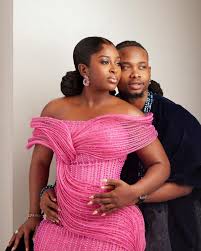The Super Bowl, widely regarded as America’s biggest sporting event of the year, attracted an impressive lineup of celebrities, including Taylor Swift, Jay-Z, Sir Paul McCartney, and Bradley Cooper.
Fans packed the Caesars Superdome in New Orleans, Louisiana, to watch the Philadelphia Eagles take on the Kansas City Chiefs in a highly anticipated showdown. In an electrifying game, the Eagles emerged victorious with a commanding 40-22 win.
The presence of A-list musicians, Hollywood actors, and influential figures made the spectacle even more remarkable, but the event was not just about football—it was a night filled with historic moments, star-studded appearances, and a politically charged atmosphere.
While the Super Bowl has always drawn entertainment heavyweights, this year’s event made history with the attendance of a sitting U.S. president. Donald Trump became the first president to attend the championship game while in office, adding a political dimension to the already high-profile event.
His appearance marked a significant moment, as he stepped onto the field before kickoff to meet with families of victims from the tragic New Year’s Day terror attack in New Orleans. Trump also took time to acknowledge and commend law enforcement officers and emergency personnel who responded to the devastating incident.

The attack, which took place on January 1, left the nation in shock. A U.S. Army veteran, Shamsud-Din Jabbar, drove a pick-up truck into crowds gathered on Bourbon Street, killing fourteen people and injuring dozens more.
The horrifying act of violence was only stopped when police shot and killed Jabbar at the scene. The attack cast a shadow over the city, and Trump’s visit to the stadium was seen as a moment of solidarity with the victims’ families.
His presence at the game, however, sparked a mixed reaction from the crowd, with some cheering and others booing as he made his way into the stadium.
Trump watched the game from a private box, accompanied by his daughter Ivanka and son Eric, as well as a handful of political figures who traveled with him on Air Force One.

Notably absent from the event was First Lady Melania Trump, who did not accompany her husband to the game. While Trump’s attendance was historic, it was also controversial, given his strained relationship with the National Football League (NFL).
During his first term, he publicly criticized the league for allowing Black players to kneel during the national anthem in protest of racial injustice. His presence at the Super Bowl reignited conversations about his past clashes with the NFL and its stance on social issues.
Adding to the night’s political undertones, the NFL made a subtle but notable change on the field. Behind one of the end zones, the league displayed the phrase “Choose Love,” replacing the “End Racism” message that had been prominently featured since 2021.
The adjustment sparked discussions, with some seeing it as a softer, less confrontational approach to the league’s ongoing efforts to address social justice concerns. The change also stood in contrast to the politically charged atmosphere that Trump’s presence brought to the game.
Amidst all the political discourse, the Super Bowl remained a star-studded affair, with major celebrities in attendance. Taylor Swift, one of the most talked-about figures of the night, arrived to support her boyfriend, Travis Kelce, who played for the Kansas City Chiefs.
Other notable attendees included Adam Sandler, Paul Rudd, and Kevin Costner, as well as music legends like Jay-Z and Sir Paul McCartney. The game had additional entertainment value beyond the field, with cameras frequently panning to the celebrities in the stands, capturing their reactions and interactions.
Despite her global popularity, Swift did not receive a warm welcome from all fans. When her face appeared on the stadium’s Jumbotron, a section of Eagles fans booed her—a reaction likely fueled by her past political endorsement of Kamala Harris, who ran against Trump in the 2024 presidential election.
The unexpected boos highlighted how deeply political affiliations have permeated even entertainment-driven events like the Super Bowl. Nevertheless, Swift appeared unfazed as she cheered on Kelce and the Chiefs in what was an intense matchup.
As always, one of the most anticipated aspects of the Super Bowl was the halftime show, and this year’s performer did not disappoint. Rapper Kendrick Lamar took center stage for an electrifying performance, delivering a medley of his biggest hits.

The show kicked off with a dramatic introduction by Hollywood legend Samuel L. Jackson, who appeared on stage dressed as Uncle Sam, adding a theatrical flair to the set. Lamar’s performance showcased his signature lyrical prowess and bold stage presence, making for a visually stunning and politically charged show.
Lamar was joined by R&B sensation SZA for a duet of their hit song Toxic Love, setting the stage on fire with their chemistry and vocal delivery. His set also included the fan-favorite Humble, featuring a group of dancers dressed in red, white, and blue, who formed an American flag on stage. The artistic display blended patriotism with hip-hop culture, creating an unforgettable moment for viewers.

One of the most buzzworthy moments of the halftime show came when Lamar hinted at performing Not Like Us, his diss track aimed at fellow rapper Drake. Before launching into the song, he turned to his dancers and said, “I wanna play their favorite song, but you know they love to sue,” alluding to the ongoing legal battle between Drake and Universal Music Group over the track.
Despite the controversy surrounding the song, Lamar went ahead with the performance, sending social media into a frenzy.
Lamar’s performance of Not Like Us was particularly significant, as the track had just won both Song of the Year and Record of the Year at the Grammy Awards the previous weekend.
His decision to include it in his Super Bowl set felt like a triumphant moment, further fueling the ongoing feud between the two rap superstars. Drake, who has filed a lawsuit against Universal Music Group, claims that the song contains defamatory content that falsely accuses him of serious misconduct. The legal battle continues to unfold, but Lamar’s bold performance ensured that the song remained a hot topic in pop culture.

Beyond the game and musical performances, Super Bowl commercials also took center stage, with advertisers shelling out record-breaking sums for coveted airtime.
This year, a single 30-second slot reportedly cost an astonishing $8 million, making it one of the most expensive Super Bowl ad campaigns in history. With such high stakes, brands pulled out all the stops to create memorable and engaging commercials.
One of the standout ads featured football legend David Beckham and actor Matt Damon as long-lost twins who reconnected over a beer, delivering a humorous and nostalgic storyline.
Meanwhile, Meg Ryan and Billy Crystal delighted fans by recreating their iconic diner scene from When Harry Met Sally—except this time, instead of discussing relationships, Sally was passionately expressing her love for mayonnaise. The unexpected twist had audiences laughing and reminiscing about the beloved 1989 rom-com.
British singer Seal also made a surprise appearance in an ad, humorously portraying an actual seal who was dismayed by his inability to hold a drink with his flippers.
In another memorable commercial, celebrity chef Gordon Ramsay teamed up with comedian Pete Davidson to promote a cookware brand, while The Muppets starred in an ad for a booking website, searching for the perfect vacation accommodations. The variety of commercials added to the night’s entertainment, making the Super Bowl not just a sporting event but a cultural phenomenon.
From historic presidential appearances to music-fueled controversies and multimillion-dollar commercials, Super Bowl 59 was far more than just a championship game. It was a collision of sports, politics, entertainment, and pop culture, offering something for everyone.
Whether it was Trump’s unprecedented attendance, Swift’s polarizing reception, Lamar’s headline-grabbing halftime show, or the star-studded advertisements, the event cemented its status as an annual spectacle that extends well beyond the football field.








